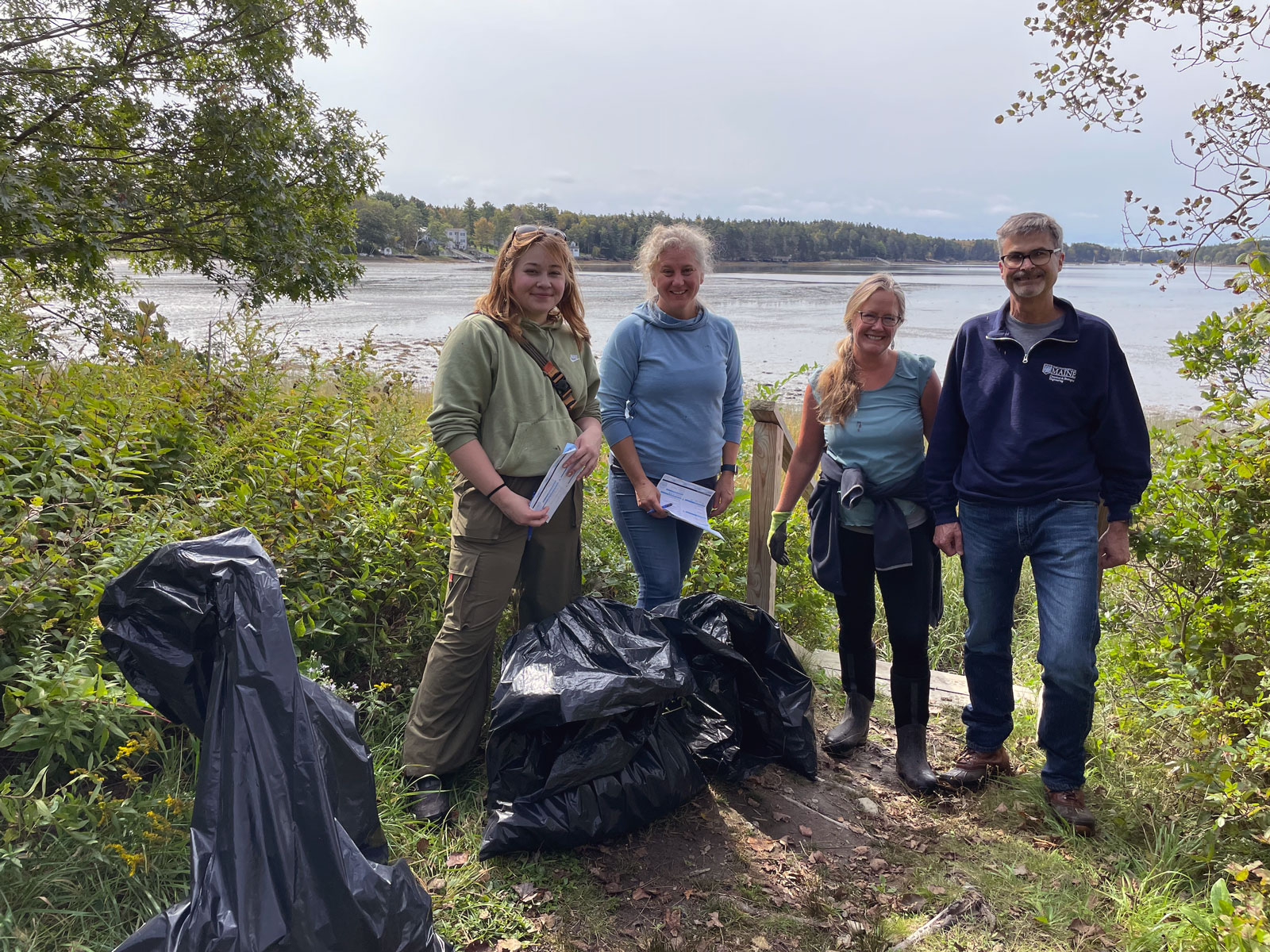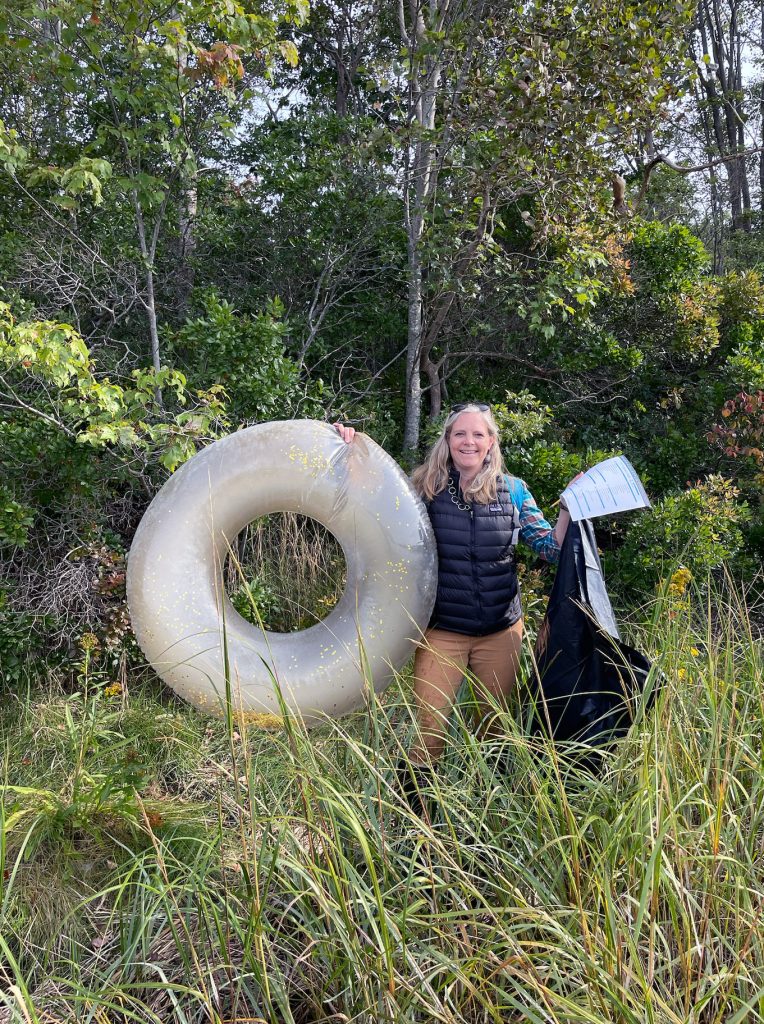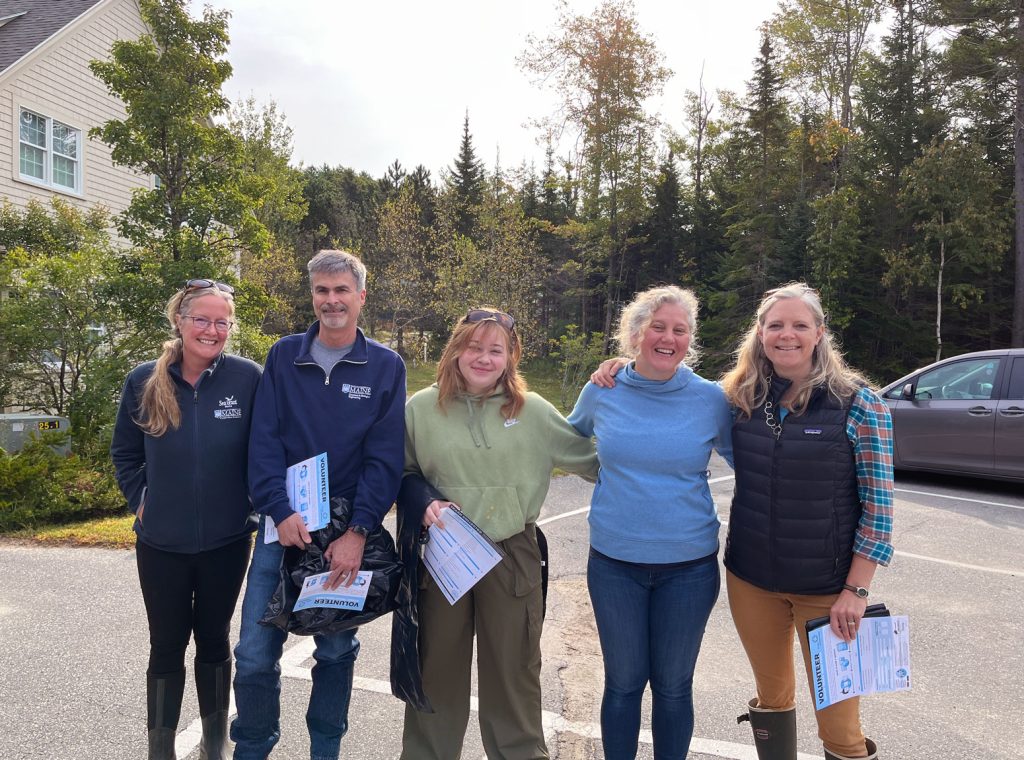
Working Together to Reduce Single-Use Plastic Packaging Waste at the Source
Contributor: Beth Bisson, Associate Director, Maine Sea Grant
On a beautiful Saturday morning in September, Maine Sea Grant staff and University of Maine faculty and students met at the Harpswell Town Office to pick up trash bags and data sheets to participate in a Maine Coastweek Coastal Cleanup. The annual statewide cleanups, coordinated by the Maine Coastal Program, are part of an international initiative established by The Ocean Conservancy Program more than 35 years ago to reduce marine debris. Marine debris is any kind of solid waste (most often plastic) that finds its way into marine and coastal ecosystems here in Maine and around the world.
In our case, the activity was also an opportunity for our newly formed group of research partners to get to know one another and learn about each other’s work while diving into the very issue we are collaborating to address – a new three-year research project focused on reducing the sources and impacts of marine debris. As we talked, our group collected and bagged hundreds of pieces of marine debris, ranging from tiny pieces of plastic filament and foam to escaped pool floats and fishing gear. We left the event with a renewed appreciation for the beauty of our coastline, and an even stronger resolve to tackle this worldwide challenge.

Sensitive coastal ecosystems and communities here in Maine and around the world continue to struggle with rapidly growing impacts of marine debris, much of which is generated through single-use plastics that are not recycled or collected in landfills. To address this challenge, Maine Sea Grant and University of Maine researchers collaborated to write a successful $3 million proposal to the NOAA National Sea Grant Program focused on reducing the burdens of single-use plastics on human communities and coastal ecosystems in Maine and throughout the Gulf of Maine.
Launched in August 2023, the project is titled Reducing Marine Debris at the Source: Material Replacement and Source Reduction for Single Use Food Packaging. Our goals are to lower the barriers for businesses to enter the sustainable packaging market, and to study ways that communities and businesses can adopt reusable packaging systems that help reduce the inflow of plastics to the ocean.
The UMaine research team, led by Dr. Doug Bousfield, includes faculty and staff within the UMaine Departments of Chemical and Biomedical Engineering and Anthropology, as well as the UMaine Process Development Center and the Climate Change Institute. Maine Sea Grant staff are coordinating the new interdisciplinary collaboration and leading the community engagement and outreach components of the work.
Four separate research tracks are contributing to different aspects of the effort. Three of the tracks are working to develop innovative, biodegradable alternatives to single-use plastic packaging, using lobster shells, kelp, wood fiber, and other natural materials to form cellulose nanofiber films and water and grease barrier layers for paper and molded paper containers, as well as a foam material to serve as an alternative to polystyrene. A social science research track will work with culinary and food packaging businesses, and municipal, nonprofit and government partners to develop a partner-informed model to improve the quality and sustainability of reusable food systems.
Six University of Maine graduate students will work with the team to carry out the research, with four already on board. Two more students and a postdoctoral research associate will be joining the group in the coming months. The team has also assembled a professional Advisory Committee who will provide guidance and feedback throughout the effort. The Committee is composed of representatives from coastal and marine fishing, aquaculture, culinary, tourism, food packaging and distribution businesses, and environmental protection, public health, and municipal government.
The project is part of a $50 million investment by the National Oceanic and Atmospheric Administration (NOAA) in marine debris prevention and removal projects carried out by the NOAA National Sea Grant Network. These investments are supported through the Bipartisan Infrastructure Law (BIL) of 2021, which included nearly $3 billion in targeted investments by NOAA in the areas of habitat restoration, coastal resilience and weather forecasting infrastructure.

Posted 17 November 2023
